Introduction
Building a strong broadband team is an important first step in your community’s broadband efforts. This part of the toolkit provides tips, processes, and actionable steps you can take to move your community’s broadband efforts forward.
- Develop and convene your core project team.
- Identify and engage community stakeholders.
- Draft a regional broadband vision and goals.
- Identify key barriers and opportunities related to “Internet for All”.
Whether you already have a planning team, a work group, an advisory committee, or whether you are only just beginning, this is a great place to begin.
Ready to jump in? Download the resources for this lesson.
Striving Toward ‘Internet for All’
Definition: Internet for All
Before we talk specifically about planning, we want to define a term we’ll be using throughout this toolkit. Internet for All means all Wisconsinites have access to affordable broadband service and equitably share in the benefits of broadband technology. ‘Internet for All’ is important because it improves and enhances…
- health
- education
- economic opportunity
- quality of life
FOR EVERYONE
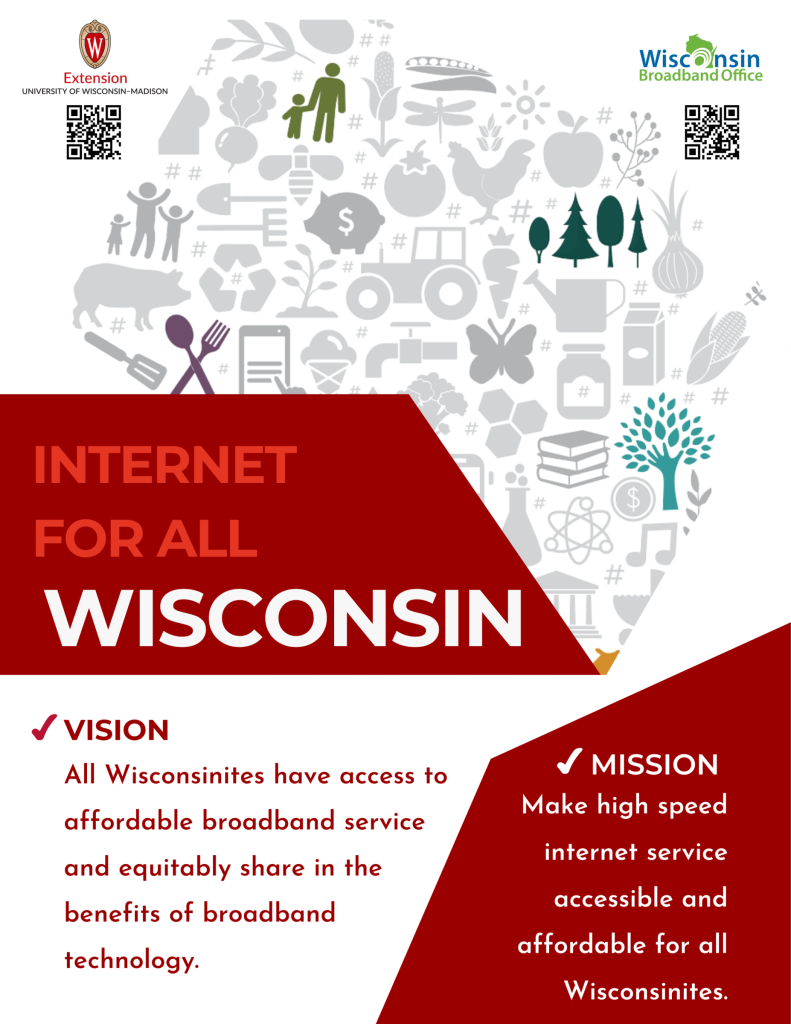
Your broadband and digital equity planning should include a focus on striving towards ‘Internet for All’.
In addition, we hope your planning will result in a written plan for your community that includes…
- Cleary identified needs related to:
- Access, adoption, affordability
- Digital Literacy; and
- Financial and Human Resources
- Prioritization of those needs.
- Proposed solutions that reflect the community’s core values and a focus on ‘Internet for All’.
The Benefits of Planning
Planning is a process we use to determine shared goals and a course of action to obtain those goals. Planning offers a number of benefits. If you are ready to dig into planning, we have a guide that details each of the items in the following list.
- A clear goal
- A path of action and reduced uncertainty
- Innovative ideas and effective decisions
- Improved performance and efficient use of resources
- Better coordination and less duplication
- Effective engagement of individuals most impacted by an issue
Engaging Local Partners and Community Members in Broadband and Digital Equity Planning
Several of the principles of effective planning remind us of the importance of engaging community members and local partners in planning.
Carefully consider who should contribute to your broadband and digital equity planning. Sometimes we use the term stakeholders or audiences to refer to these individuals.

Local Partners
Local partners are organizations in the community that have an interest in broadband and digital equity. For example, local governments, schools, business community, nonprofits, libraries, emergency services, and healthcare.
They may offer specific insight into broadband and digital equity needs. They may offer specific expertise that is useful in your planning. Or, they may have influence or resources that can contribute to proposed solutions.
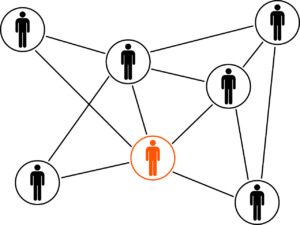
Community Members
Community members are individuals or groups, in the community who can provide perspectives, opinions, and experiences that will also inform your plan. You can think of community members as likely users who will benefit personally and professionally from access to broadband and the tools and resources that support their digital equity.
A Note About Engaging ISPs in Your Planning Process
You may have noticed that we didn’t include internet service providers (ISPs) in the list above. Keep in mind that this is the COMMUNITY’S plan and, while input from ISPs will be important to understanding where high-speed internet infrastructure is needed, the cost structures in place, and the future plans of ISPs in your area, it shouldn’t drive all the strategies and decisions about the future of broadband in your community. Here are some things to keep in mind:
Community ownership of the plan
Having an ISP as a member of the team that writes a proposal or plan could raise questions about if the plan is community-driven or influenced by the ISPs business plan.
Perceived favoritism
Including one ISP – even if initially there only seems to be one logical candidate – exposes the planning team’s efforts to claims of favoritism if another ISP later appears on the scene.
Hesitancy of team members to contribute
Including an ISP on the planning team may discourage other planning team members from actively participating and voicing their opinion, even if they could make a valuable contribution.
The important takeaway is that the ways in which you involve ISPs should complement rather than dominate the planning process.
We’ll explore ways to include public-private partnerships in your plan, later in the planning process.
Organizing Your Team
You may have noticed that one way you can engage local partners and community members is by inviting them to participate on your planning team. This may not be possible in some situations. For example, your planning team may already be formed, and a local government or other entity may determine its membership. For some, there is more flexibility in forming or expanding membership on your planning team.
Regardless of the membership of your planning team and regardless of what your planning team is called, it’s important to be clear about the roles and responsibilities of your planning team.
Here are some common roles and responsibilities that may be relevant to your planning team. You may identify other roles and responsibilities, or the entity that formed your group may have some different or additional expectations.
Roles and Responsibilities of a Planning Team
- Provide insight and direction
- Identify and engage partners and community members
- Document and incorporate partner and community input
- Communicate progress
- Ensure deadlines and requirements are met
- Document needs, resources, and assets
- Prioritize needs and propose solutions
Putting it Into Practice
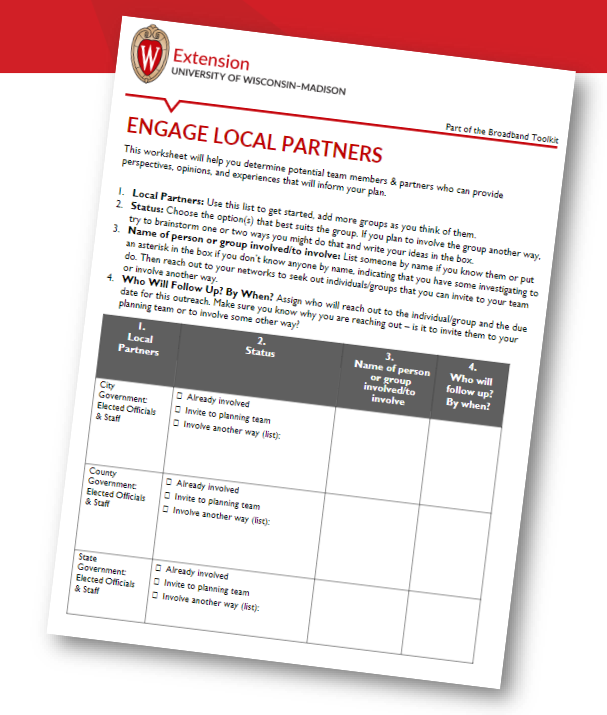
Organizing Your Team: Included in the downloadable resource bundle is a worksheet to help you determine who you will invite to your planning team or into your planning process and how.
The resource bundle also includes an invitation template you can use when inviting someone to serve on your planning team.
Team Operations: To get you started, one of the resources we have provided for you is a ‘Planning Team Operations’ guide. You can use this worksheet to guide a conversation that can shape your team’s operations.
Adapted from National Digital Education Extension Team (2022)



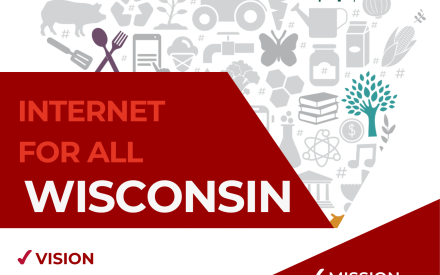



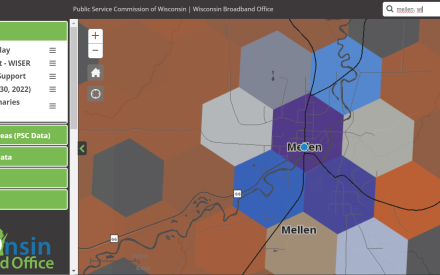


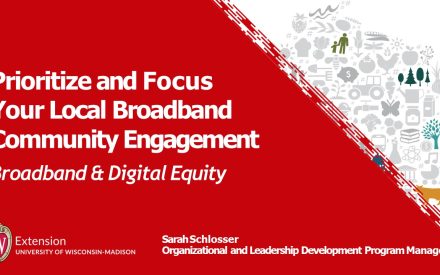

 What's Next in Wisconsin Broadband, December 2025
What's Next in Wisconsin Broadband, December 2025 Broadband Expansion in Wisconsin: Case Studies - Page 3
Broadband Expansion in Wisconsin: Case Studies - Page 3


